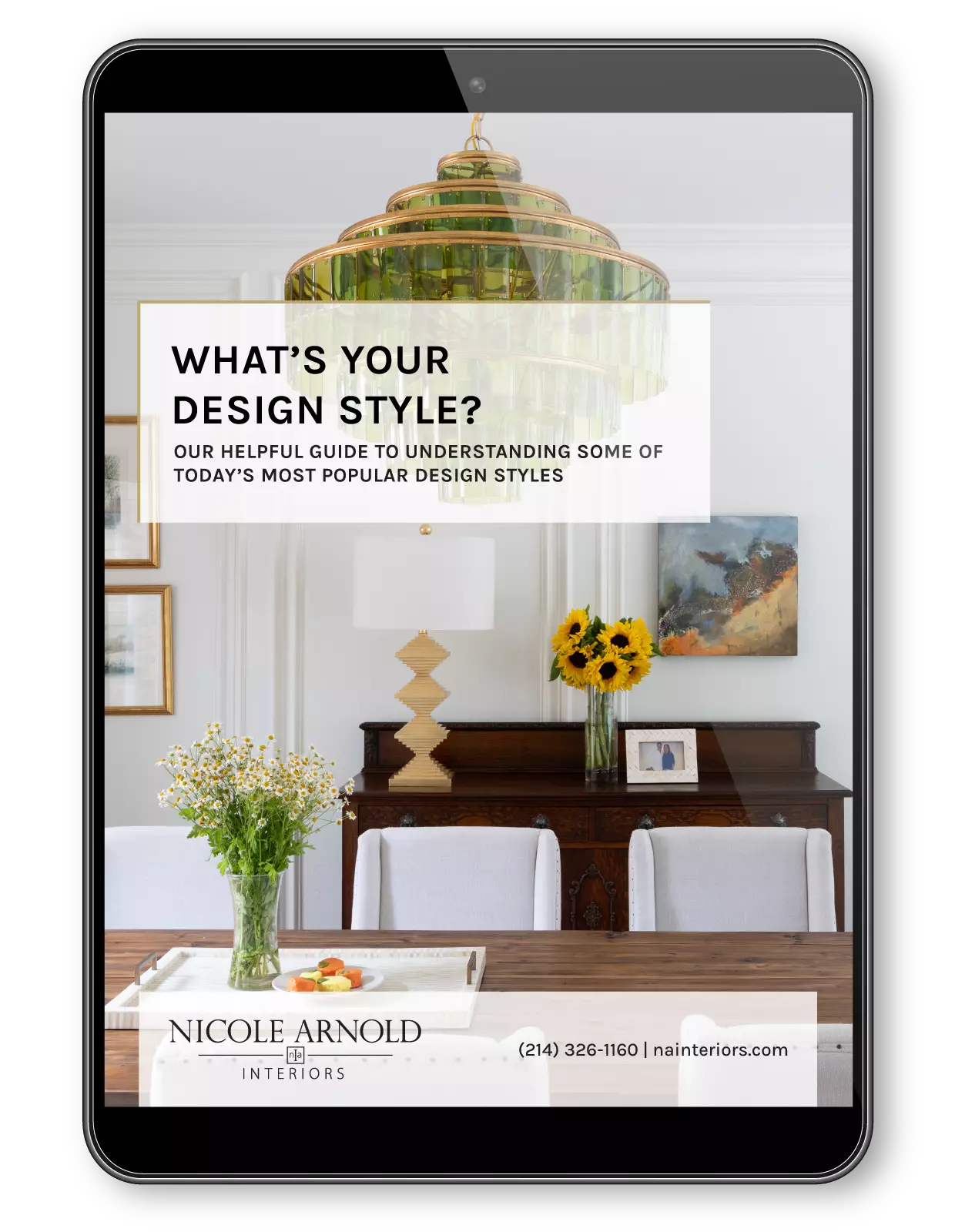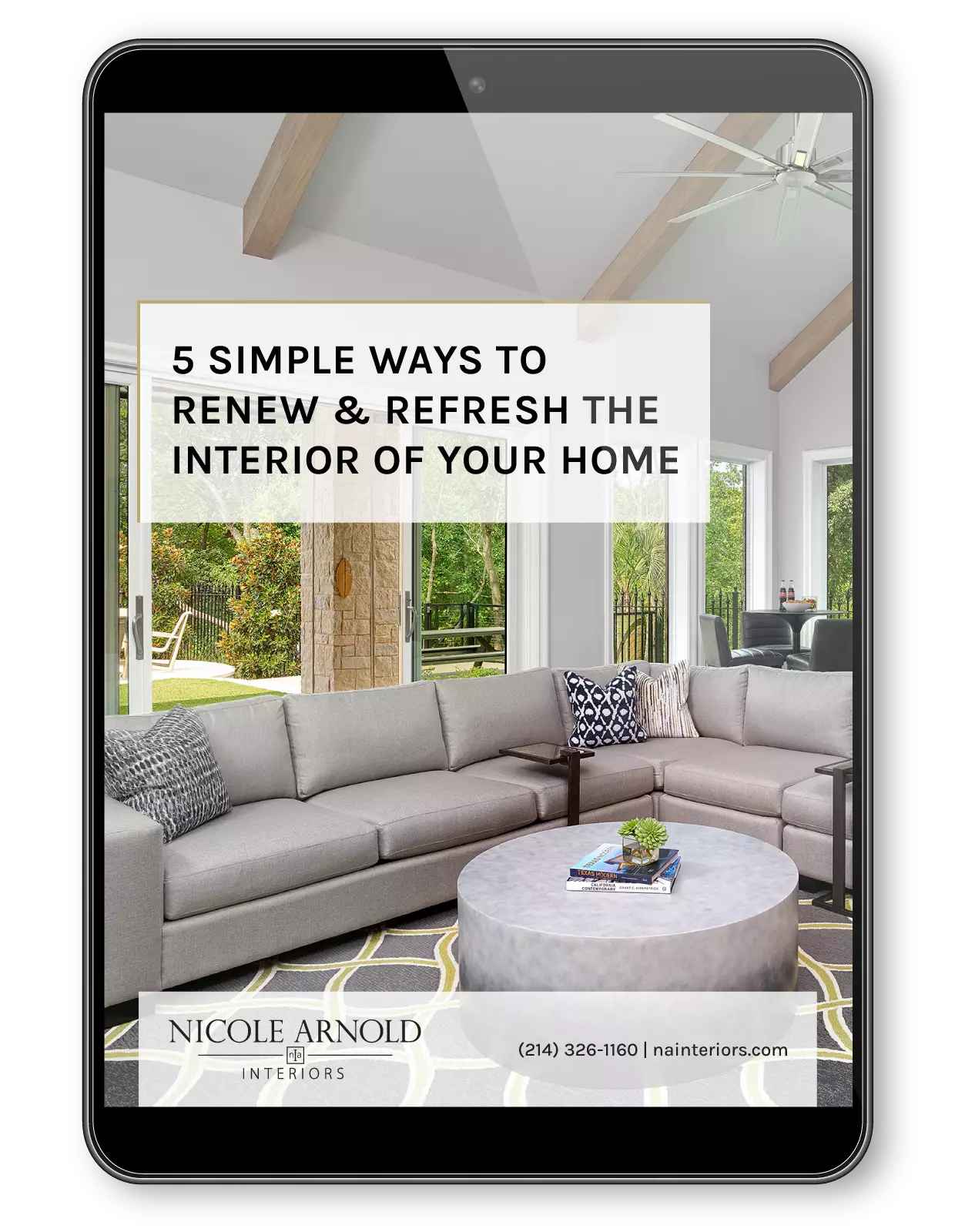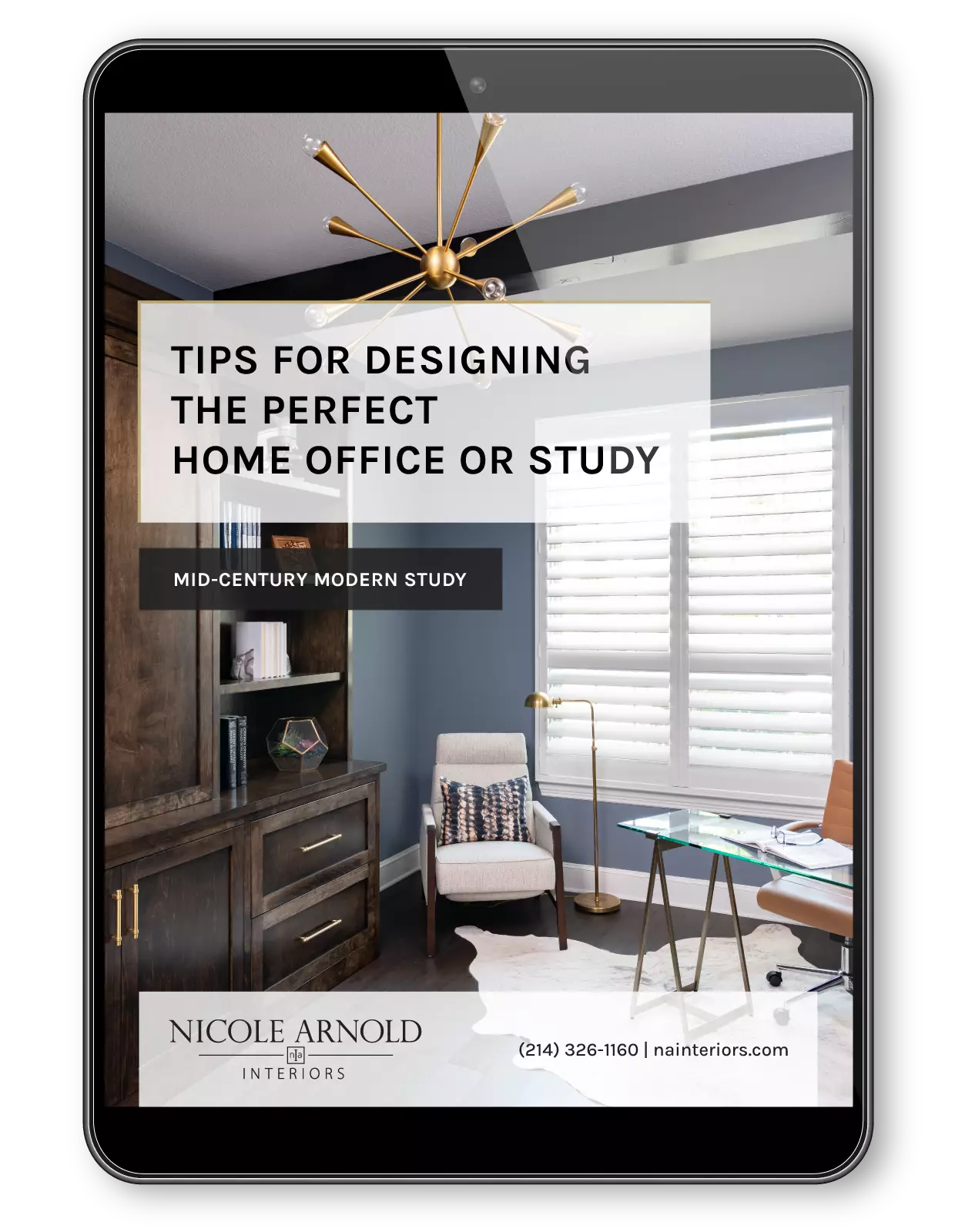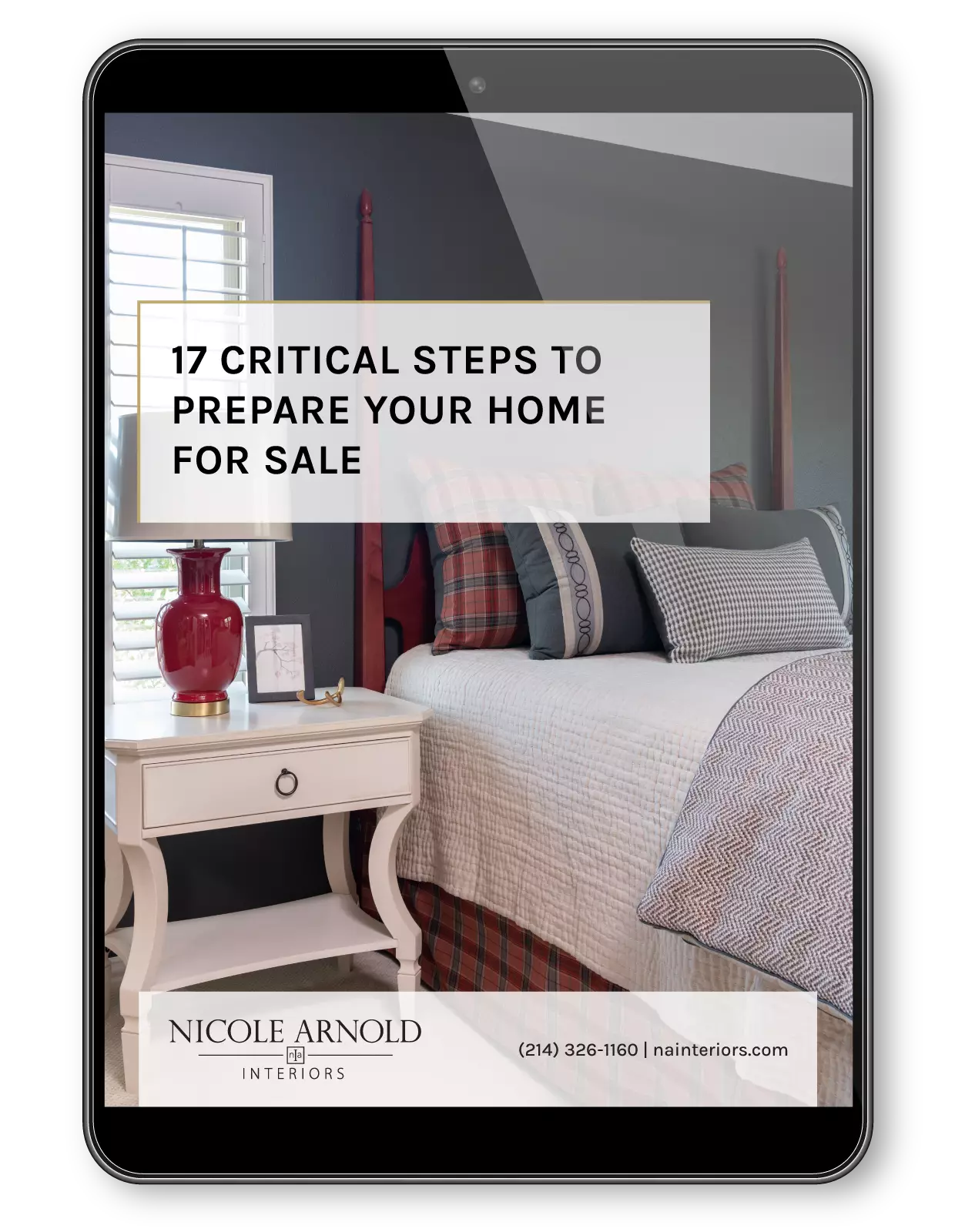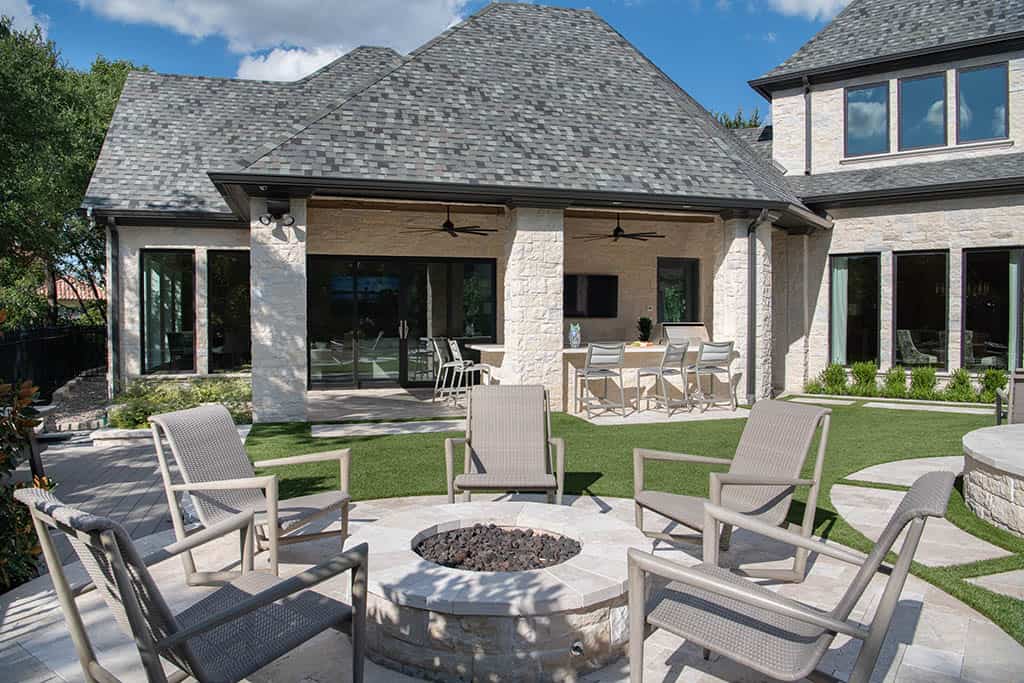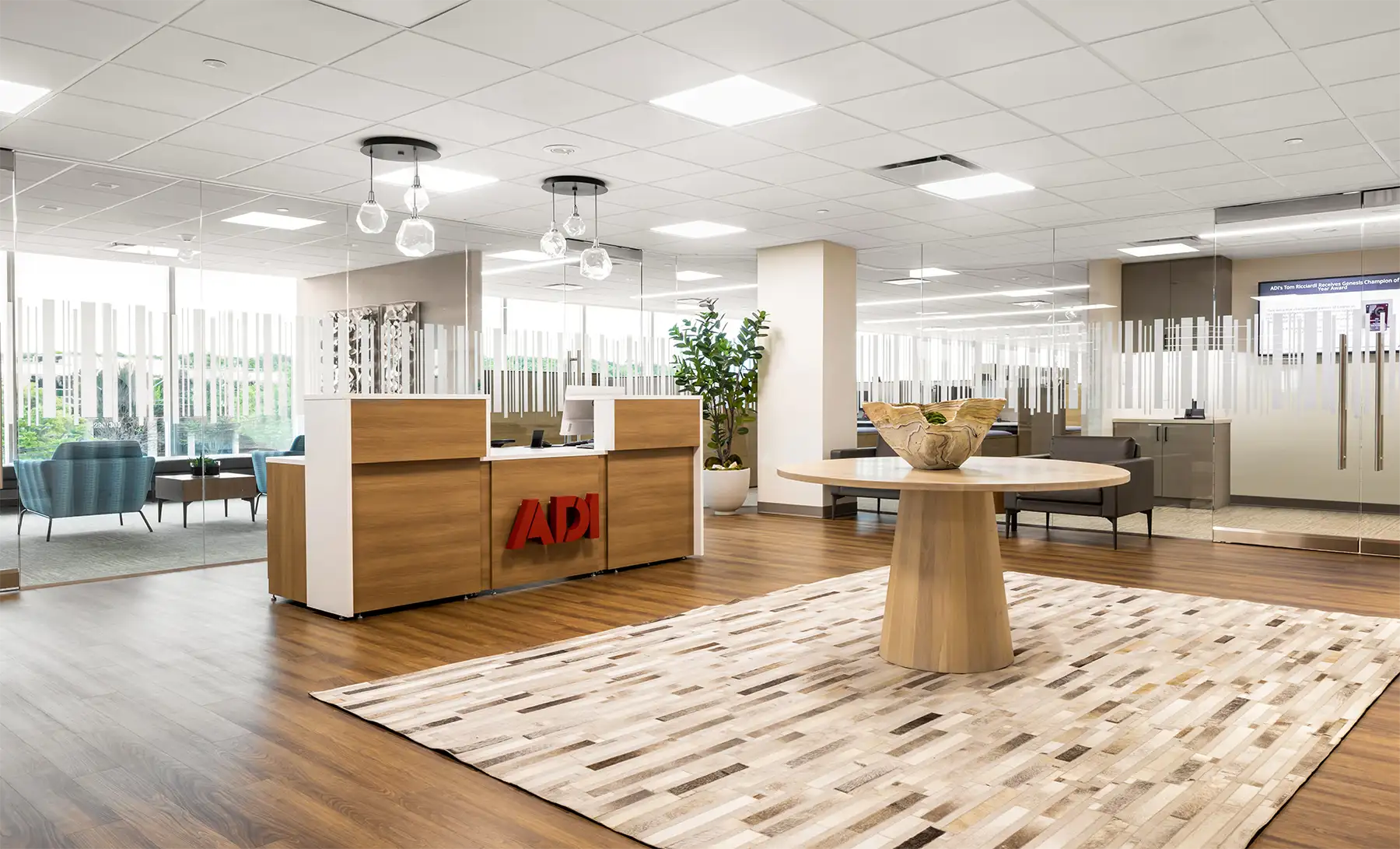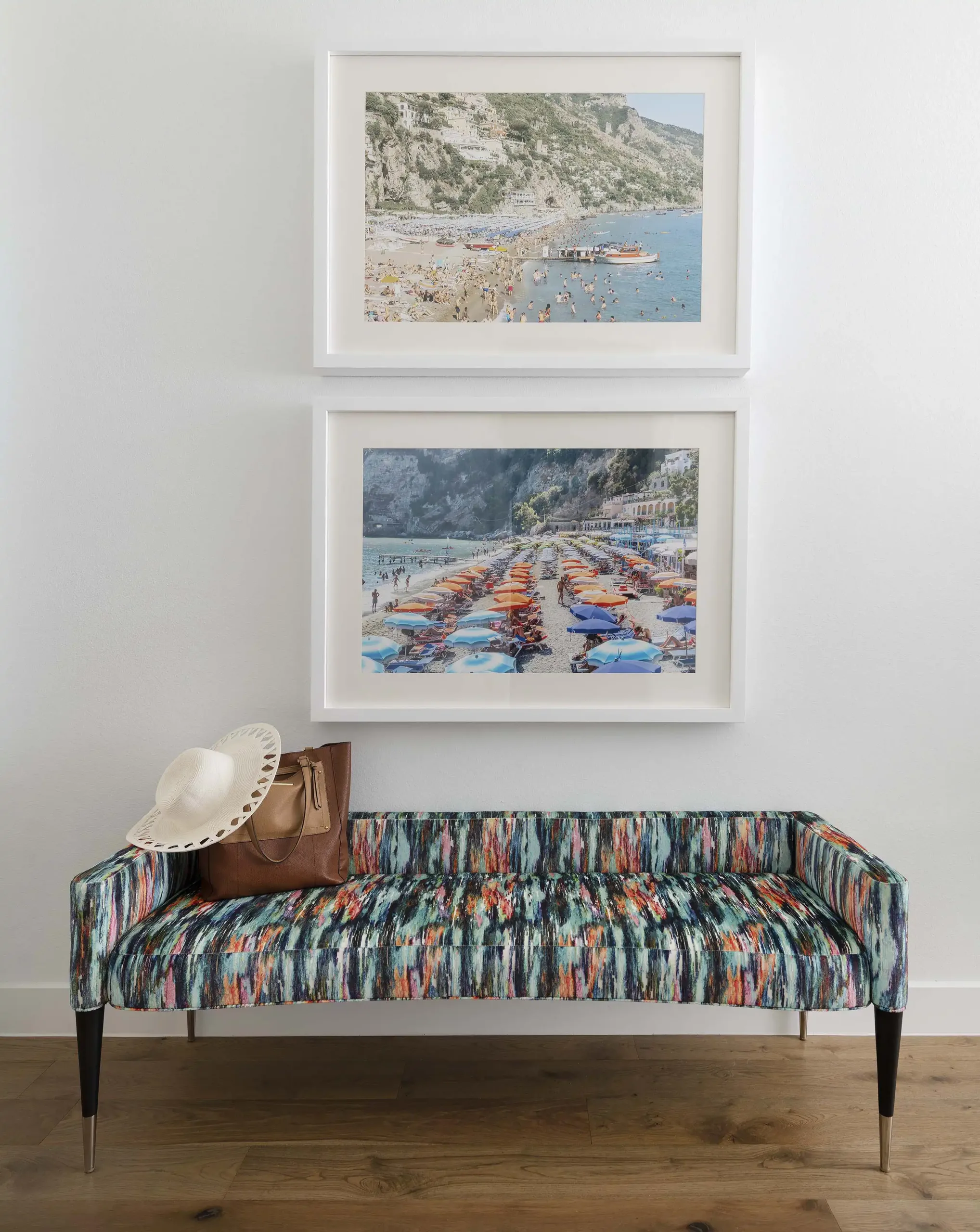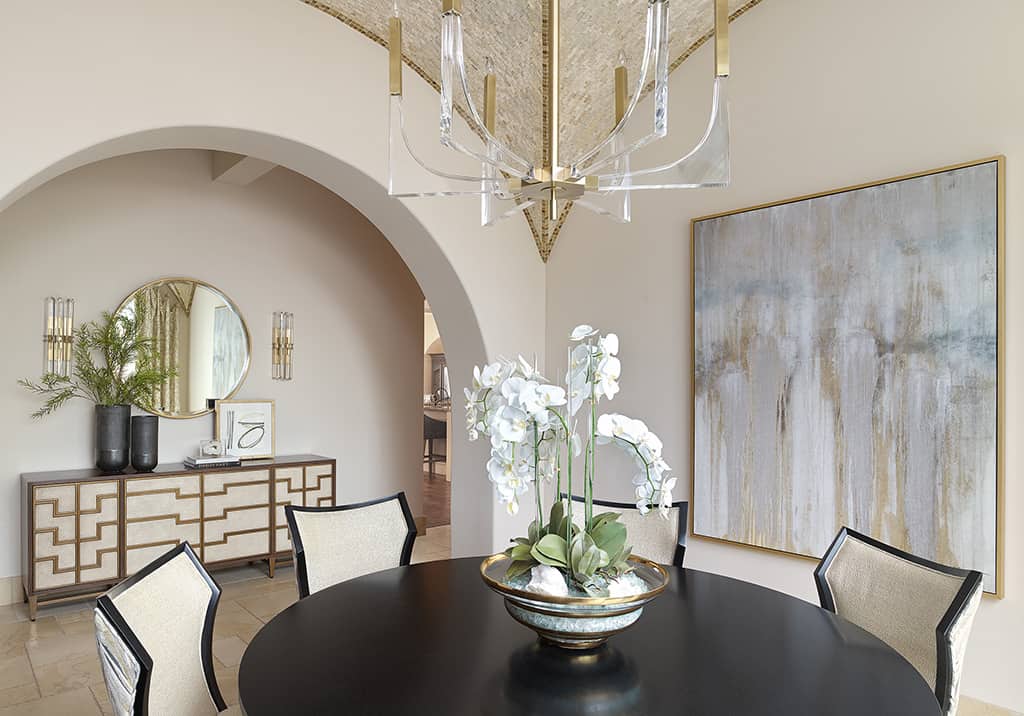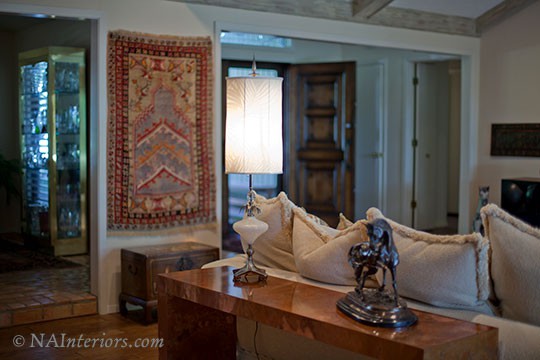
The curves of the accessories and the soft wall covering help balance the hard surfaces and corners in this living room.
Designing a room requires countless decisions. We all know there are more than enough fabrics, finishes and colors out there to accommodate any imagination. Yet, with all the options available, it can be difficult to know if you’re making the right decision for your particular project.
Light, geometry, color and texture all influence the way we feel about a space, so having the right mix is important. Our lives are about balance and interior design is no exception.
How can you be certain that you’re on the right track? Is there a guideline or rule of thumb we can follow in making choices about a design project?
Yes, there is…I call it the “balance filter.”
Interior Design Evaluation
Whenever I look at a room, I evaluate each element against how well it’s balanced within the entire space. If the room just doesn’t “feel right,” it’s likely the room lacks balance. It’s very subliminal, but if a room is too extreme in any one direction, chances are that people won’t fully enjoy it.
I look at the balance of positive and negative space. I look at light. I look at texture. I look at hard and soft elements. I even look at interior content versus exterior content, like what you see outside when you look through the window. Each of those elements influences the overall look of the space.
Every design decision made affects a room’s personality. As an example, consider a room that only utilizes “hard” surfaces such as tile or wood floors, leather furniture, glass tables and wood blinds. It lacks warmth. The absence of soft surfaces makes it feel “cold.” This also has a tremendous influence on the way sound travels in the room. Hard surfaces don’t absorb sounds and the room tends to echo or be very loud, particularly when several people are present.
How would you fix this by using the balance filter? In the example above, we would accessorize using soft surface elements. Instead of a selecting a metal sculpture or wall hanging to adorn a wall, we might choose an oil painting because of its canvas property. Adding rugs, fabric window coverings, and plants could markedly transform the feel of the space.
Geometry also has a lot to do with how we perceive a room. A space will visually appear to have a “hard” look to it if you only use blocky furniture and 90 degree angles. To balance this, we would incorporate ovals and circles into our design, utilizing furniture with curved edges and flowing lines.
A great analogy for the balance filter is baking. You wouldn’t put as much sugar as you do milk in a cake and randomly mix it together. You would use a recipe that explains the correct proportions so that the end result is good. It’s the same way in design: balance and proportion.
Balance for Aesthetics and Function
At the same time, balance isn’t only about looks; it’s also about how you use the room. Every design project has an aesthetic goal and a practical goal. We want the space to look and feel beautiful, and we also have to keep in mind that people use, live or work in this space. In order to achieve the right mix for each client’s needs, we must always balance aesthetics and function.
This is the reason why I go through a discovery process with every client at the beginning of the project. I’m charged with connecting with them in such a way that I understand what balance looks and feels like for them. That way, not only can I create and bring their vision to life, I can be sure they’re going to fully enjoy using their space.
There are no hard and fast rules in design; it’s more art than science. However, it’s extremely important to achieve balance. This is a talent that great designers have and one a client will always appreciate!


